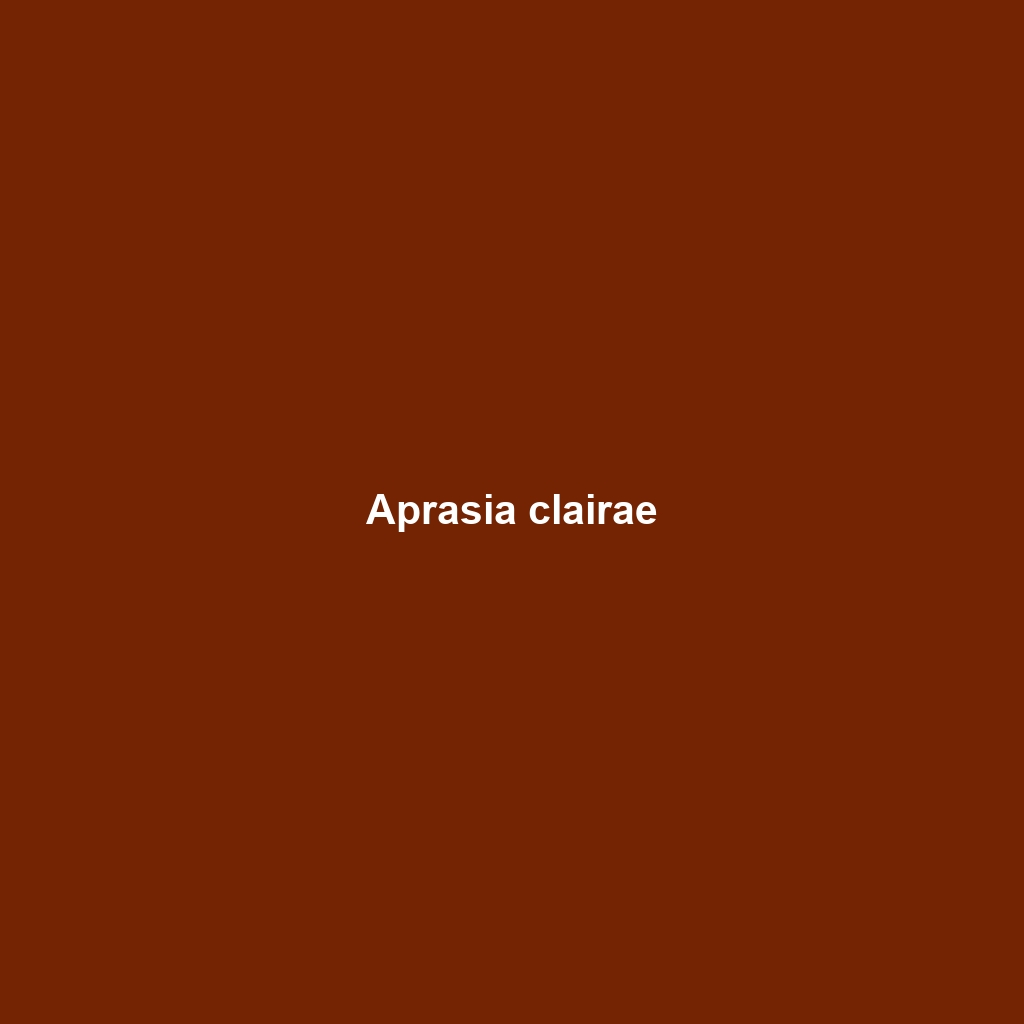Species Description: Aprasia clairae
Common Name: Aprasia clairae
Scientific Name: Aprasia clairae
Habitat
Aprasia clairae primarily inhabits the southern regions of Australia, particularly in the temperate woodlands and heathlands. This species is typically found in areas with loose, sandy soils that allow for easy burrowing. It thrives in environments that provide cover, such as leaf litter and dense ground vegetation, which are essential for its survival.
Physical Characteristics
Aprasia clairae is a small, elongated reptile, averaging about 15 to 20 centimeters in length. Its smooth scales exhibit a distinct coloration, ranging from light brown to grey with subtle darker bands. This coloration aids in camouflage within its natural habitat. The head is slightly flattened, resembling that of a worm, which is a unique adaptation that allows it to blend seamlessly into its surroundings.
Behavior
This species is predominantly fossorial, meaning it spends much of its life underground. Aprasia clairae is known for its secretive nature and remains mostly hidden during the day. Its activity peaks during dawn and dusk when it emerges to forage. The reptile is also characterized by its remarkable ability to burrow quickly into sandy soils, which protects it from predators.
Diet
Aprasia clairae primarily feeds on small invertebrates such as ants, termites, and small larvae. It employs a foraging strategy that relies on its keen sense of smell to locate food sources buried in the soil. This diet plays a critical role in controlling the population of its prey in its ecosystem.
Reproduction
Reproductive habits of Aprasia clairae occur during the warmer months, typically between spring and early summer. Females lay a clutch of 2 to 5 eggs, which they bury in moist soil. The incubation period lasts about 8 to 10 weeks before hatchlings emerge, fully formed and ready to fend for themselves. Notably, maternal care is minimal, as is typical for oviparous reptiles.
Conservation Status
According to the IUCN Red List, Aprasia clairae is currently listed as vulnerable. The primary threats to this species include habitat loss due to urban development and agricultural expansion. Conservation efforts are focused on habitat preservation to ensure the survival of this unique reptile.
Interesting Facts
One fascinating aspect of Aprasia clairae is its ability to regenerate its tail after losing it, a characteristic that can be advantageous for escaping predators. Additionally, it has a unique social behavior where juvenile individuals may often be found basking together, displaying a form of communal living.
Role in Ecosystem
Aprasia clairae plays a significant role in its ecosystem by acting as both predator and prey. As a consumer of invertebrates, it helps maintain the balance of insect populations in its habitat. Conversely, it serves as a food source for larger predators, thus contributing to the biodiversity of its environment.
